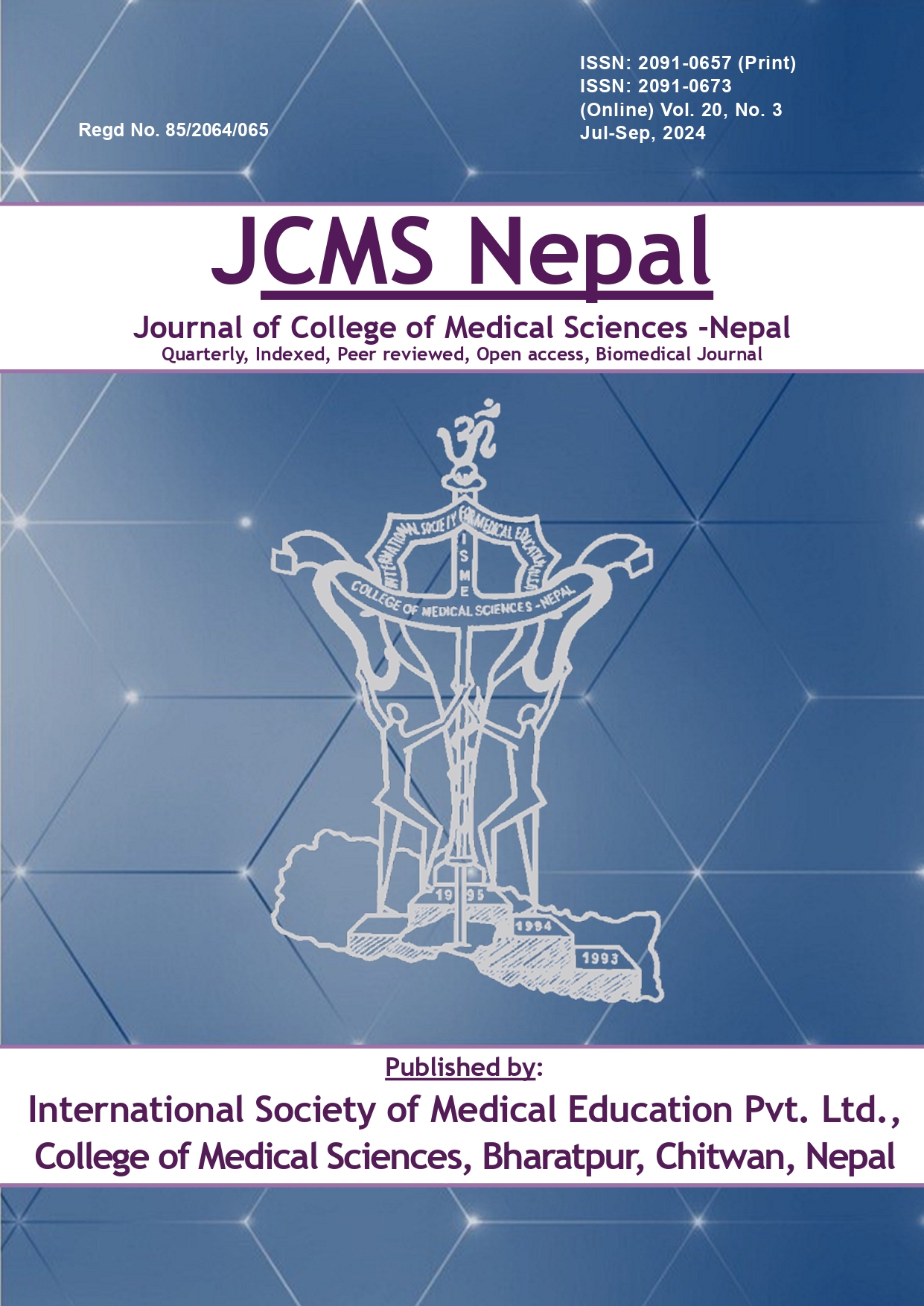Prevalence of Hypovitaminosis D and its Association with Serum Lipids in Patients with Type 2 Diabetes Mellitus
DOI:
https://doi.org/10.3126/jcmsn.v20i3.69918Abstract
Background
Hypovitaminosis D has become worldwide public health concern affecting all age groups and both genders. Its prevalence is very high in South Asia. Many studies reported that vitamin D deficiency is concerned with diabetes mellitus and impaired glucose tolerance. The aim of this research was to find the prevalence of hypovitaminosis D and its association with serum lipids among type 2 diabetic patients.
Methods
A cross-sectional study, conducted among a total 162 patients with type 2 diabetes mellitus in Manipal Teaching Hospital, Pokhara. The serum level of FBS, PPBS, urea, creatinine, calcium and phosphorus, HbA1c, TG, TC, HDL-C, and vitamin D levels were measured. In the descriptive categorical data were reported in frequency with percentage and numerical data were presented as mean±SD while in inferential statistics to compare the value student t-test were used. p-value<0.05 was considered as statistically significant.
Results
The mean±SD serum level of vitamin D was 24.48 ± 13.21 ng/mL in patients with type 2 diabetes. The prevalence of hypovitaminosis D was 69.14% (With 95% CI as 62.02 to 76.25%) and sufficient of vitamin D in 30.86% (With 95% CI as 23.74% to 37.97%) among patients with type 2 diabetes. The serum lipids showed statistically insignificant association between hypovitaminosis D with sufficient of vitamin D.
Conclusions
This research showed that only in one third of the patients had Vitamin D sufficiency. The serum lipids were slightly increased in patients who had hypovitaminosis D.
Downloads
Downloads
Published
How to Cite
Issue
Section
License
Copyright (c) 2024 The Author(s)

This work is licensed under a Creative Commons Attribution-NonCommercial-NoDerivatives 4.0 International License.
This license enables reusers to copy and distribute the material in any medium or format in unadapted form only, for noncommercial purposes only, and only so long as attribution is given to the creator.




